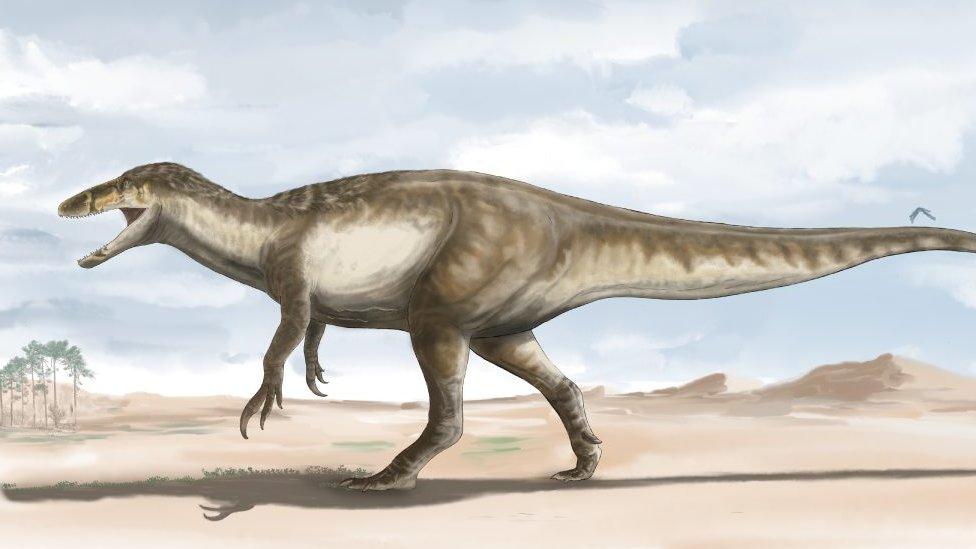Huge megaraptor Maip macrothorax fossil discovered
- Published
- comments

A drawing of what the Maip might have looked like, by illustrator Agust铆n Oz谩n.
A new species of megaraptor called Maip macrothorax has been discovered - and researchers think it could be the biggest one yet!
The fossils were discovered by a team of researchers from the National Council for Scientific and Technical Research in the Santa Cruz Province in Argentina in 2019, before the pandemic interrupted the rest of the dig.
Measuring in at around 9 -10 metres long, the Maip macrothorax was a fearsome predator with super-long sharp claws that it used to grab hold of its prey.
The researchers chose the name 'Maip' after the name of an evil spirit from Aonikenk mythology, and 'macrothorax' because of its large chest cavity.
What was the Maip macrothorax like?
A drawing showing how big the dinosaur might have been compared to a human, and the bones that the paleonologists found.
The Maip would have been a pretty terrifying predator when it was alive during the Cretaceous Period, around 70 million years ago.
It wasn't just big, it also had long arms and sharp claws around 35cm long! In fact researchers think its claws were its main weapon.
It was lightweight with powerful legs, making it a fast and agile runner.
"Maip's bones helped us better understand the anatomy of megaraptors. They belong to a family whose skeleton was not like that of a tyrannosaurus - large and heavy - but rather light... much lighter, something like a hollow brick compared to a solid one" said lead author Alexis Aranciaga Rolando.
Megaraptors - also known as "giant thief" - are part of the Therapod family. Other members of the therapod family include carnivores like tyrannosaurs and allosaurs.
Palaeontologist Fernando Novas, who led the team, was also the first researcher to find the first megaraptor in 1996.
"These findings are completed with Maip: now we have one of the largest, most robust and one of the last to live in the area before the mass extinction at the end of the Cretaceous" he said.
Palaeontologists say there is still a lot they don't know about Maip, so will return to the area where it was found to do more research in 2023.
- Published22 March 2022
- Published26 June 2021
- Published6 March 2022
